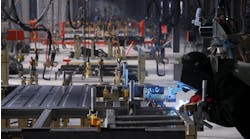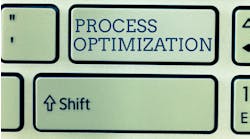Lean manufacturing methodology is a systematic approach to eliminating waste, improving efficiency, and optimizing resources in manufacturing processes initially developed by Toyota in the 1950s as a response to poor economic conditions in Japan following WWII. Numerous companies around the world—including Nike, Toyota, and Intel—have since adopted lean methodology to enhance their operational performance and competitiveness. Perhaps you are with such a company.
The core principle of lean manufacturing is to create value for customers while minimizing waste in all aspects of the production process. In lean terminology, waste refers to any activity or process that does not add value to the end product; this can include overproduction, excess inventory, waiting times, unnecessary transportation, defects, overprocessing, and underutilization of human resources.
Lean methodology aims to identify and eliminate these wasteful activities through continuous improvement and a culture of problem-solving. The lean model is composed of several methods that work together to reduce waste in the entire production process:
- Just-in-Time (JIT) production: JIT is a production system where materials, components, and resources are delivered to the production line exactly when needed, in the quantities required, and in the correct sequence. This minimizes inventory holding costs and reduces the risk of overproduction or obsolescence. Nike’s production process offers a prime example of JIT production in action; by closely monitoring customer demand and aligning production with it, Nike has been able to reduce inventory costs and respond more quickly to changing market demands, improving its supply chain efficiency.
- Kaizen: Kaizen is a Japanese term that means continuous improvement. This approach involves engaging employees at all levels of the organization to identify and implement small, incremental improvements in their daily work processes. As one of the pioneers of lean methodology, Toyota has ingrained a culture of Kaizen in its production system. Employees at all levels are encouraged to actively participate in problem-solving activities and suggest improvements to enhance efficiency and quality. This bottom-up approach to continuous improvement has helped Toyota achieve remarkable results in terms of waste reduction, cost savings, and product quality.
- Employee empowerment and accountability: Creating a culture of employee empowerment and accountability enables a company’s workforce to make better decisions about their productivity. Leading tech company Intel, for example, has adopted lean principles in its manufacturing operations with a strong focus on empowering its employees. The company’s leadership encourages its employees to take ownership of their work processes and make decisions to improve efficiency and reduce waste, which has led to increased employee engagement, higher morale, and improved overall operational performance.
- Visual management: Visual management involves using visual cues—such as color-coded charts, diagrams, and signs—to provide real-time information about the status of production processes. This helps teams quickly identify and address issues, reducing delays and improving productivity.
- Standardized work: Standardized work requires the creation of standardized processes and procedures that are followed consistently across the organization to ensure that work is performed efficiently, reducing variability and minimizing defects. Standardization helps enhance transparency, reduce errors, and improve overall operational efficiency.
- Poka-Yoke: Poka-Yoke is a Japanese term that means “mistake-proofing” and involves designing processes or equipment in a way that prevents errors or defects from occurring in the first place. This can include adding sensors, alarms or other devices to detect and prevent errors, as well as creating visual cues or guides to ensure correct assembly or operation. Many businesses implement Poka-Yoke in their manufacturing processes to minimize defects and errors in product assembly. By proactively preventing errors, companies can reduce rework and repetition, saving a substantial amount of time and money.
Digitizing lean methodology
In the modern era, we are seeing many companies integrate these lean methodologies with a digital approach to increase their efficiency even further. One of the most obvious steps a company can take to implement digitized lean methodology is through digital-visual management. The increased accessibility of technology—and the customizability that allows it to be adapted for virtually any use in any industry—is putting efficiency within the reach of more companies.
Similarly, the rise in automated tools—such as artificial intelligence (AI)—is enabling companies to standardize their workforce more effectively. Automation has been used in manufacturing to complete mundane tasks for a while now, but the introduction of AI enables companies to automate even more complex tasks. The superior data-processing capabilities of AI compared to a human worker could enable businesses to skyrocket their efficiencies.
Additionally, standardization and automation can significantly reduce the number of mistakes made by human workers, allowing businesses to practice Poka-Yoke. Although artificial intelligence is far from perfect, having an AI complete a task and having the human worker go back and “check its work” is more efficient than the human worker doing the entire task alone. Alternatively, AI can be programmed to verify the accuracy/validity of a human worker’s performance.
Given the challenges the manufacturing industry has faced in recent years—from supply chain crises to overall economic downturns—it is becoming more important than ever for businesses to cut down on waste wherever and whenever possible. Adopting lean methodology in combination with digitization can help improve the efficiency of a workplace and improve the bottom line.


